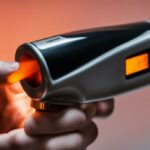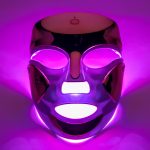Last Updated on 6 months by Francis
The use of contactless infrared thermometers has become increasingly common during the COVID-19 pandemic. These thermometers offer a convenient and hygienic way to quickly measure body temperature without direct contact. However, there have been concerns about the safety of infrared thermometers, particularly regarding their impact on the brain’s pineal gland.
It is important to address these concerns and separate fact from fiction. The Ministry of Health of Malaysia and experts in the field have debunked the claim that infrared thermometers emit harmful radiation. Infrared thermometers are designed to detect and absorb the heat emitted by the human body and convert it into electricity. There is no scientific evidence to support the notion that they can cause harm to the brain.
In this article, we will explore the safety of infrared thermometers, how they work, their limitations, and their role in COVID-19 safety measures. By understanding these aspects, we can make informed decisions and ensure the safe use of infrared thermometers.
Contents
Key Takeaways:
- Infrared thermometers do not emit harmful radiation and are considered safe to use for temperature screening.
- They work by detecting and measuring the infrared radiation emitted by the human body.
- While infrared thermometers offer convenience, they have limitations in terms of accuracy and cannot measure internal body temperature.
- Proper training and high-quality equipment are essential for accurate and safe temperature measurement.
- Infrared thermometers play an important role in COVID-19 safety measures but should be used in conjunction with other precautions.
How Infrared Thermometers Work
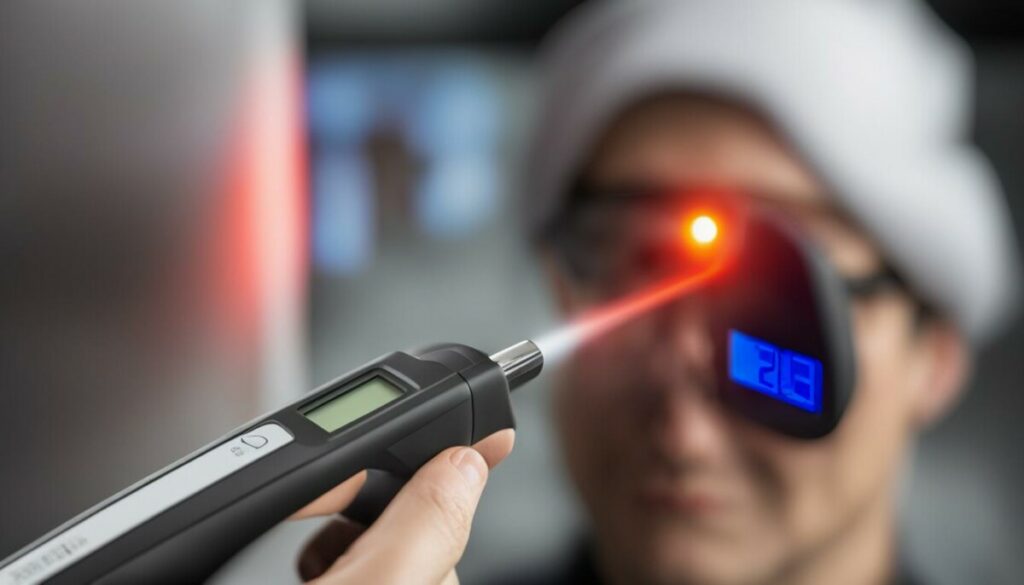
Infrared thermometers work by detecting and measuring the infrared radiation emitted by an object, in this case, the human body. These thermometers use infrared sensors to detect the heat emitted from the body and convert it into an electrical signal. The thermometer then processes this signal to determine the temperature and display it on a screen.
Infrared thermometers offer several benefits compared to other temperature measurement methods. Firstly, they are contactless, which makes them convenient and hygienic to use, especially in public settings. They also reduce the risk of cross-contamination and minimize the spread of diseases. Additionally, infrared thermometers provide fast and accurate temperature readings, allowing for quick screening and identification of individuals with elevated body temperatures.
However, it’s important to note that infrared thermometers have certain limitations in terms of accuracy. Factors such as the distance between the thermometer and the forehead, as well as external environmental conditions, can affect the measurement accuracy. It is essential to follow specific guidelines for proper use and positioning of the thermometer to ensure more accurate readings. Additionally, infrared thermometers have an accuracy range of ±3 degrees, meaning that the recorded temperature may not always reflect the true body temperature.
Benefits of Infrared Thermometers
Here are some key benefits of using infrared thermometers:
- Non-contact measurement: Infrared thermometers allow for temperature measurement without physical contact, reducing the risk of spreading germs and infections.
- Convenience: The contactless nature of infrared thermometers makes them easy to use in various settings, including high-traffic areas.
- Fast and efficient: Infrared thermometers provide instant temperature readings, allowing for quick screening and identification of individuals with elevated body temperatures.
- Reduced cross-contamination: By eliminating the need for physical contact, infrared thermometers help minimize the spread of diseases and infections.
Accuracy Considerations
While infrared thermometers offer convenience and speed, it’s important to consider their limitations in terms of accuracy:
- Distance: Maintaining the recommended distance between the thermometer and the forehead is crucial for more accurate temperature readings.
- Environmental factors: External conditions, such as the temperature and humidity of the environment, can affect the accuracy of infrared thermometers. It is important to take these factors into account when interpreting temperature readings.
- Calibration: Regular calibration of infrared thermometers is necessary to ensure accurate readings and reliable performance. Following the manufacturer’s instructions for calibration is essential to maintain accuracy.
Accurate Temperature Measurement with Infrared Thermometers

To ensure accurate temperature measurement with infrared thermometers, it is important to follow best practices. By implementing these infrared thermometer best practices, you can enhance the reliability of temperature readings and minimize the risk of inaccuracies.
Best Practices for Accurate Temperature Measurement
- Ensure the infrared thermometer is kept at a recommended distance of approximately 1 foot from the person’s forehead. This distance allows for accurate detection of the emitted heat.
- Position the infrared thermometer correctly on the forehead, ensuring that it is aimed directly at the skin’s surface.
- Take multiple readings to establish an average temperature and account for any variations.
- Follow the manufacturer’s instructions for proper use and calibration of the infrared thermometer.
It is crucial to note that while infrared thermometers provide a convenient and non-contact approach to temperature measurement, their accuracy may be affected by various factors. These factors can include environmental conditions, such as extreme heat or cold, as well as the presence of head covers or other objects obstructing the forehead. Furthermore, the measurement accuracy of infrared thermometers may also be influenced by the individual’s perspiration levels, which can affect the surface temperature of the skin.
“Accurate temperature measurement with infrared thermometers requires adherence to specific guidelines and considerations of various influencing factors.”
Medical and Pharmaceutical-Grade Infrared Thermometers
To further improve accuracy, it is recommended to use medical and pharmaceutical-grade infrared thermometers that meet higher standards. These thermometers undergo rigorous testing and comply with stricter quality control measures, ensuring more precise temperature readings.
| Infrared Thermometer Grade | Accuracy Range |
|---|---|
| Standard Infrared Thermometers | ±3 degrees |
| Medical and Pharmaceutical-Grade Infrared Thermometers | ±0.2 degrees |
The table above illustrates the significant difference in accuracy between standard infrared thermometers and medical or pharmaceutical-grade models. When precision is of utmost importance, investing in higher-grade infrared thermometers can provide more reliable temperature measurements, especially in medical and healthcare settings.
By following these infrared thermometer best practices and considering the accuracy limitations, you can ensure more accurate and reliable temperature readings while using infrared thermometers.
Risks and Safety Precautions for Infrared Thermometers
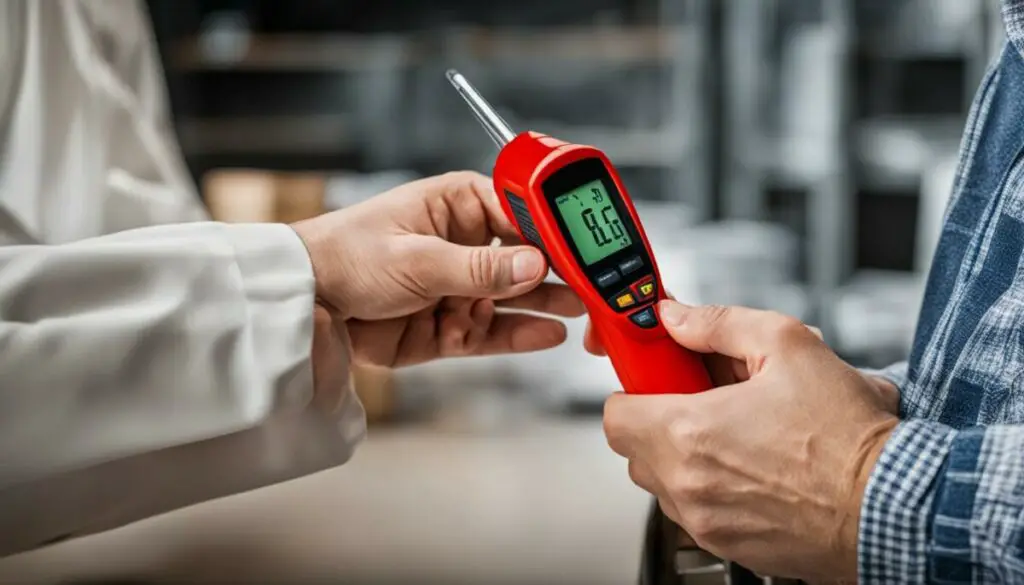
While infrared thermometers offer convenience and non-contact temperature measurement, it’s important to be aware of their limitations and take appropriate safety precautions. By understanding the potential risks and following safety guidelines, you can ensure accurate and safe use of these thermometers.
Risks of Infrared Thermometers
- External Temperature Measurement: One of the main limitations of infrared thermometers is that they can only measure the external temperature of the skin. This may not always accurately reflect the core body temperature, which is measured internally. It’s important to keep this in mind when using infrared thermometers for temperature screening purposes.
- Environmental Factors: External factors such as the surrounding environment, head covers, and positioning on the forehead can affect the measurement accuracy of infrared thermometers. These factors may alter the heat emission from the body and consequently impact the recorded temperature. It’s crucial to consider these variables when using infrared thermometers.
Safety Precautions for Infrared Thermometer Use
To ensure the safe use of infrared thermometers, it is recommended to follow these safety precautions:
- Keep the recommended distance: Maintain a distance of approximately 1 foot between the infrared thermometer and the person’s forehead. This distance helps optimize accuracy and ensures reliable readings.
- Follow manufacturer’s instructions: Read and adhere to the manufacturer’s instructions for proper use and calibration of the infrared thermometer. Following these guidelines helps maintain accuracy and reliability.
- Consider medical-grade thermometers: If possible, opt for medical or pharmaceutical-grade infrared thermometers that meet higher standards. These thermometers undergo rigorous testing and are designed to provide more accurate and reliable temperature measurements.
By understanding the risks associated with infrared thermometers and implementing appropriate safety precautions, you can maximize the effectiveness and reliability of these non-contact temperature screening devices. It is important to consider these factors when utilizing infrared thermometers in various settings, particularly during the COVID-19 pandemic.
Comparison with Other Temperature Measurement Methods
When it comes to temperature measurement, infrared thermometers are often compared to other methods such as in-ear thermometers. Each of these methods has its own advantages and limitations, making them suitable for different situations.
Non-contact infrared thermometers offer the convenience of measuring temperature from a distance without the need for physical contact, which is particularly beneficial for screening multiple individuals quickly and hygienically. However, it’s important to note that infrared thermometers measure the temperature of the skin’s surface and may not provide as precise readings as in-ear thermometers, which measure the internal body temperature.
In-ear thermometers, on the other hand, provide more accurate readings of internal body temperature by measuring the heat emitted from the eardrum. These thermometers require physical contact with the ear, which may not be desirable in certain situations, such as when screening a large number of individuals or when hygiene is a concern.
“Infrared thermometers offer a non-contact alternative, but they may not provide as precise readings as in-ear thermometers.”
Ultimately, the choice between non-contact infrared thermometers and in-ear thermometers depends on the specific requirements of the situation. If quick and contactless temperature screening is the priority, infrared thermometers may be the preferred choice. However, if precise internal body temperature measurement is necessary, in-ear thermometers may be more suitable.
| Infrared Thermometers | In-Ear Thermometers | |
|---|---|---|
| Measurement Method | Non-contact measurement of skin surface temperature | Contact measurement of internal body temperature through the ear |
| Advantages | – Contactless and hygienic – Suitable for screening multiple individuals quickly – Can be used at a distance |
– More accurate readings of internal body temperature – Suitable for individual measurements – Proven technology |
| Limitations | – Less precise readings compared to in-ear thermometers – Measures skin surface temperature only |
– Requires physical contact with the ear – May not be suitable for quick screening or large-scale use – Potential hygiene concerns |
| Best Use | – General temperature screening – Large-scale temperature checks – Situations where contactless measurement is preferred |
– Individual temperature measurements – Situations requiring precise internal body temperature readings – Medical settings |
The Role of Infrared Thermometers in COVID-19 Safety Measures
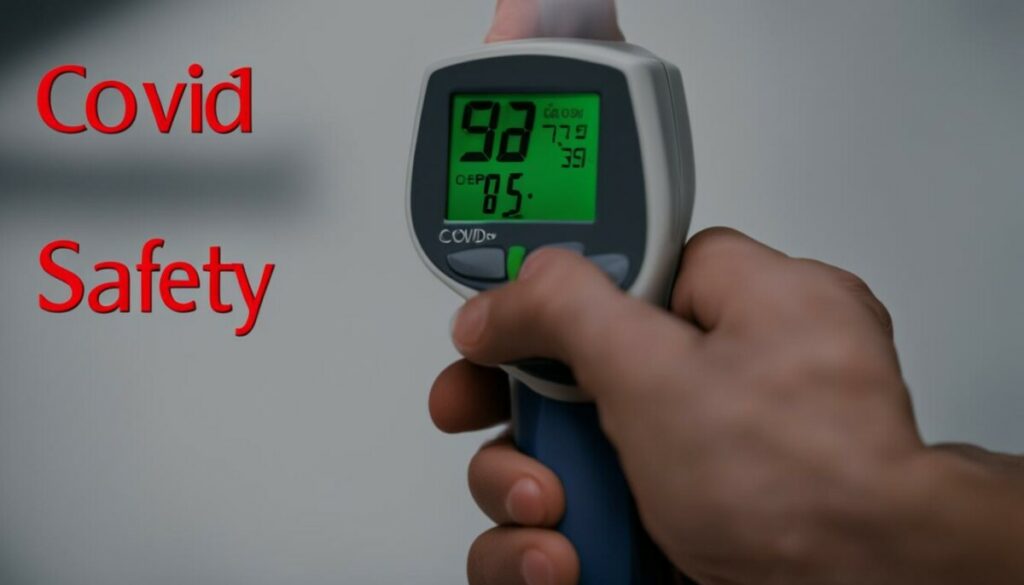
Infrared thermometers have played a crucial role in the implementation of COVID-19 safety measures across various settings, including businesses, schools, airports, and healthcare facilities. These contactless devices offer a quick and convenient method of temperature screening, allowing for the identification of individuals with elevated body temperatures, which can be an indication of a potential infection.
By using infrared thermometers, organizations can efficiently screen a large number of individuals without the need for direct contact, minimizing the risk of cross-contamination and the spread of the virus. This is particularly valuable in public spaces where maintaining social distance and reducing physical contact is essential. Infrared thermometers provide an extra layer of protection by enabling early identification of potential cases and allowing for prompt action, such as isolation and testing, to prevent further transmission.
It’s important to note that while infrared thermometers are a valuable tool in COVID-19 safety measures, they should not be relied upon as the sole means of screening for the virus. Temperature screening should always be accompanied by other preventive measures, including the use of face masks, hand hygiene, and adherence to social distancing guidelines. Additionally, infrared thermometers have limitations in terms of accuracy, as they measure the external temperature of the skin rather than internal body temperature. Therefore, they should be used as part of a comprehensive approach to ensure the safety and well-being of individuals in various environments.
Table: Comparison of Temperature Screening Methods
| Temperature Screening Method | Advantages | Disadvantages |
|---|---|---|
| Infrared Thermometers | – Contactless and convenient | – May not provide precise internal body temperature readings |
| In-ear Thermometers | – More accurate for internal body temperature measurement | – Requires contact with the ear |
| Oral Thermometers | – Widely accessible and easy to use | – Requires close contact and proper disinfection |
| Forehead Thermometers | – Non-contact and hygienic | – May not provide precise internal body temperature readings |
Using infrared thermometers in COVID-19 safety measures is an effective way to identify individuals with potential infections and prevent the spread of the virus. However, it’s important to remember that temperature screening should always be accompanied by other preventive measures, and infrared thermometers have limitations in terms of accuracy. By employing a comprehensive approach that combines the use of infrared thermometers with other safety measures, we can create safer environments for everyone.
Safety Recommendations for Infrared Thermometer Use
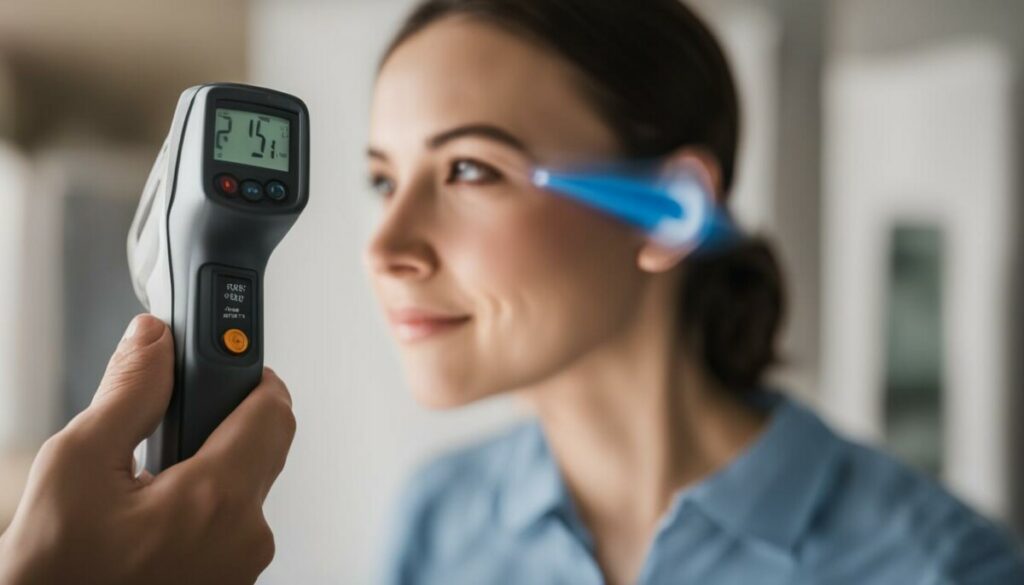
Ensuring the safe use of infrared thermometers is crucial to maintain accurate temperature measurements and protect individuals’ well-being. By following the recommended guidelines, you can minimize any potential risks or inaccuracies associated with infrared thermometer use.
Proper Distance and Positioning
When using an infrared thermometer, it is essential to maintain the recommended distance from the person’s forehead. Typically, this distance is around 1 foot (30 centimeters). This ensures that the thermometer can capture the emitted heat accurately. Placing the thermometer too close or too far can affect the measurement’s accuracy.
Follow Manufacturer’s Instructions
Each infrared thermometer may have specific instructions provided by the manufacturer. It is important to read and follow these instructions carefully to ensure proper use. The manufacturer’s guidelines may include information about optimal positioning, usage frequency, calibration requirements, and any other specific considerations.
Regular Calibration
To maintain accuracy, it is advisable to calibrate your infrared thermometer regularly. Calibration ensures that the thermometer is correctly measuring temperatures within the designated range. Refer to the manufacturer’s instructions for guidance on the calibration process and frequency. Regular calibration helps optimize the thermometer’s performance and provides reliable temperature readings.
Choose High-Quality Thermometers
Investing in medical-grade or pharmaceutical-grade infrared thermometers can significantly improve safety and accuracy. These thermometers undergo rigorous testing and adhere to higher standards, ensuring reliable and consistent temperature measurements. Prioritize quality when selecting an infrared thermometer for optimal results.
| Recommendations for Safe Infrared Thermometer Use |
|---|
| Maintain the recommended distance from the forehead |
| Follow the manufacturer’s instructions for proper use |
| Regularly calibrate the thermometer for accuracy |
| Choose medical-grade or pharmaceutical-grade thermometers |
By adhering to these safety recommendations, you can confidently use an infrared thermometer for temperature screening while ensuring accuracy and the well-being of individuals.
The Evolution of Body Temperature Norms
The concept of normal body temperature has evolved over the years, with studies suggesting that the average body temperature has decreased. The traditional standard of 37 degrees Celsius was established in the 19th century, but factors such as air conditioning and changes in lifestyle have led to variations in body temperature norms. Research has shown that the average body temperature of men and women today is slightly lower than it was in the past. Understanding these variations in body temperature norms helps to contextualize temperature measurements and interpret them accurately.
Body temperature is influenced by various factors, including age, gender, activity level, and the time of day. It is important to note that body temperature can fluctuate throughout the day and can be influenced by external conditions. For example, body temperature tends to be slightly higher in the afternoon compared to the morning. Additionally, physical activity and certain medications can also affect body temperature. These variations are considered normal and do not necessarily indicate illness.
Advances in medical technology and research have also contributed to the understanding of body temperature norms. The use of thermometers and temperature measurement devices has become more accurate and accessible, allowing for better monitoring of body temperature. However, it is essential to interpret temperature measurements in conjunction with other symptoms and medical history to make an accurate diagnosis.
The Impact of COVID-19 on Body Temperature Norms
The COVID-19 pandemic has further highlighted the importance of monitoring body temperature as a potential indicator of infection. The virus can cause fever, which is often one of the first symptoms to appear. Fever is characterized by an elevated body temperature above the normal range. However, it’s important to note that not all individuals infected with COVID-19 will experience fever, and some may have mild or no symptoms at all.
The identification of fever as a symptom of COVID-19 has led to increased awareness and vigilance in monitoring body temperature. Temperature screening measures, including the use of infrared thermometers, have been implemented in various settings to identify individuals with potential infections. However, it is crucial to consider the variations in body temperature norms and interpret temperature measurements in the context of other symptoms and risk factors.
In conclusion, the understanding of body temperature norms has evolved over time, and variations in temperature can be influenced by various factors. The COVID-19 pandemic has brought additional attention to the monitoring of body temperature as a potential indicator of infection. It is important to interpret temperature measurements in conjunction with other symptoms and medical history. Understanding the context of body temperature norms helps in accurate interpretation and identification of potential health concerns.
The Importance of Proper Training and Equipment
Proper training and the use of high-quality equipment are essential when it comes to temperature measurement with infrared thermometers. Adequate training ensures that users understand the correct usage, limitations, and best practices associated with infrared thermometers. By receiving comprehensive training, individuals can maximize the effectiveness and accuracy of temperature screening measures.
High-quality infrared thermometers play a crucial role in ensuring reliable temperature measurements. Medical and pharmaceutical-grade thermometers that meet stringent standards offer improved accuracy and reliability compared to lower-quality alternatives. Investing in reputable brands and certified equipment enhances the overall safety and effectiveness of temperature screening protocols.
Additionally, ongoing calibration of infrared thermometers is vital to maintain accuracy. Regular calibration helps ensure that the readings provided by the thermometer align with the actual temperature measurements. By calibrating the thermometer according to the manufacturer’s guidelines, users can trust the results obtained and make informed decisions based on accurate temperature readings.
| Benefits of Proper Training and High-Quality Equipment |
|---|
| Accurate and Reliable Measurements: Adequate training and high-quality equipment minimize the risk of inaccurate readings, enabling trustworthy temperature measurements. |
| Enhanced Safety: Proper training ensures that users understand safety protocols and guidelines, reducing the potential for errors or harm during temperature screenings. |
| Effective Implementation: By utilizing proper training and high-quality equipment, temperature screening measures can be implemented more efficiently and effectively in various settings. |
In conclusion, adequate training and the use of high-quality infrared thermometers are crucial components of temperature measurement. By ensuring that users are knowledgeable and equipped with reliable devices, accurate temperature readings can be obtained, facilitating effective temperature screening protocols and ensuring the safety of individuals in various environments.
Conclusion
Infrared thermometers are a safe and effective tool for temperature screening, particularly during the COVID-19 pandemic. The concerns about their safety and potential harm to the brain have been debunked by experts, including the Ministry of Health in Malaysia. These thermometers do not emit harmful radiation and are specifically designed to detect and absorb heat emitted from the human body.
While infrared thermometers offer convenience and non-contact temperature measurement, it’s important to note their limitations. They only measure the external temperature of the skin and may not always reflect the core body temperature accurately. Factors such as the environment, head covers, and positioning on the forehead can also affect the measurement accuracy. Therefore, it is recommended to use infrared thermometers as a screening tool for general purposes rather than relying solely on them for precise temperature readings.
To ensure accurate and safe temperature measurement, it is crucial to follow safety recommendations and guidelines. Keeping the thermometer at the recommended distance from the forehead, following the manufacturer’s instructions, and using high-quality equipment are essential. Additionally, proper training on the use of infrared thermometers can enhance the effectiveness of temperature screening measures.
In summary, infrared thermometers are generally safe and play a valuable role in COVID-19 safety measures. By understanding their limitations, adhering to safety guidelines, and considering other temperature measurement methods, we can maximize their effectiveness and reliability in temperature screening.
FAQ
Are infrared thermometers safe to use?
Yes, infrared thermometers are safe to use. The Ministry of Health of Malaysia and other experts have debunked claims that these thermometers can harm the brain. They do not emit harmful radiation and are designed to detect and absorb heat emitted from the human body. There is no scientific evidence to support the notion that infrared thermometers can cause harm to the brain.
How do infrared thermometers work?
Infrared thermometers work by detecting and measuring the infrared radiation emitted by an object, in this case, the human body. They use infrared sensors to detect the heat emitted from the body and convert it into an electrical signal. The thermometer then processes this signal to determine the temperature and display it on a screen. Infrared thermometers are contactless and offer benefits such as reducing the risk of cross-contamination and minimizing the spread of diseases.
How accurate are infrared thermometers?
Infrared thermometers have an accuracy range of ±3 degrees. While they may not provide precise temperature readings, they are suitable for general screening purposes. To ensure accurate temperature measurement, it is important to keep the thermometer at a recommended distance from the person’s forehead. However, factors such as distance and environmental conditions can affect the measurement accuracy.
What are the limitations of infrared thermometers?
Infrared thermometers have limitations in terms of accuracy and their inability to measure internal body temperature. They only measure the external temperature of the skin, which may not always reflect the core body temperature accurately. Factors such as environmental conditions, head covers, and positioning on the forehead can also affect the measurement accuracy.
How do infrared thermometers compare to other temperature measurement methods?
Infrared thermometers offer a non-contact alternative to other temperature measurement methods. While in-ear thermometers provide more accurate readings of internal body temperature, they require contact with the ear. It’s important to consider the specific requirements of the situation and choose the appropriate temperature measurement method accordingly.
What is the role of infrared thermometers in COVID-19 safety measures?
Infrared thermometers have become an integral part of COVID-19 safety measures in various settings. They enable quick and convenient temperature screening, which can help identify potential infections and reduce the spread of the virus. However, it is crucial to use infrared thermometers in conjunction with other safety measures, such as mask-wearing and social distancing.
How should infrared thermometers be safely used?
To ensure the safe use of infrared thermometers, it is important to follow certain recommendations. These include keeping the thermometer at the recommended distance from the forehead, following the manufacturer’s instructions for proper use, and regularly calibrating the thermometer to maintain accuracy. Using medical-grade infrared thermometers that meet higher standards can also improve accuracy and reliability.
Have body temperature norms changed over time?
Yes, the concept of normal body temperature has evolved over the years. Studies suggest that the average body temperature has decreased, with the average body temperature of men and women today slightly lower than it was in the past. Understanding these variations in body temperature norms helps to contextualize temperature measurements and interpret them accurately.
How important is proper training and equipment when using infrared thermometers?
Proper training and high-quality equipment are essential when using infrared thermometers. Users should receive adequate training on the correct use of infrared thermometers, including understanding the limitations and best practices. Investing in quality equipment and ensuring proper training can enhance the effectiveness of temperature screening measures and promote overall safety.



